From NSwiki, the NationStates encyclopedia.
Historic Flags
The Original City-States
As independent city states, Jonquière and Tadoussac both flew separate, though similar flags. These flags continue today as the flags of the respective provinces.
<div" class="plainlinksneverexpand">
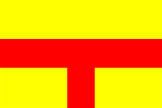
The original flag of Tadoussac. The red represents the blood of the settlers who died to establish the land, while the yellow represents the richness of the land.
</div>
<div" class="plainlinksneverexpand">
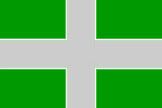
The original flag of Jonquière. The silver represents the steel in the settlers who survive these conditions, while the green represents unspoiled land.
</div>
The Fused Flag
Upon the Fusion Accord of 1837, the flags of Jonquière and Tadoussac were merged to create the new flag of Jonquiere-Tadoussac. This flag was meant to balance the merits of both flags.
<div" class="plainlinksneverexpand">
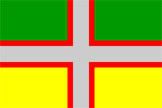
The first flag of Jonquiere-Tadoussac. This was meant to be a compromise between the two provinces.
</div>
This flag survived without comment until Jonquiere-Tadoussac joined the International Democratic Union. At that point, debate was aroused as to whether or not a new flag should be adopted to show the new alliegence of the country. A compromise was reached by adding the IDU scales of justice in a rondel the centre of the flag for all dealings with the IDU.
<div" class="plainlinksneverexpand">
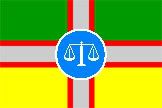
The original IDU flag of Jonquiere-Tadoussac.
</div>
Current Federal Flag

Official Flags
Provincial Flags
See also above for flags of Jonquière and Tadoussac.
<div" class="plainlinksneverexpand">

The provincial flag of Alma. The blue-white-red represents the French in the new land, while the green represents their links to Jonquière. The symbol in the canton is the provincial symbol of Alma, which is placed to show its adherence to its current nation.
</div>
<div" class="plainlinksneverexpand">
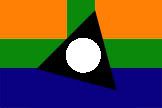
The provincial flag of Côte-Saint-Jean. The circle-in-triangle is an emblem of the Eeyo'Uch minority. The blue represents the sea, as well as the vibrancy of the people, while the green represents the land, and the orange is a traditional colour of the Eeyo'Uch.
</div>
<div" class="plainlinksneverexpand">

The provincial flag of La Montagne. The lightning is shows the energy of the new people, and a light into the darkness of the civil war. The three peaks represent the purity of the people, as well as the mountains that give the region its name. The symbols at the hearts of the peaks illustrate the adherence of the province to
IDU values.
</div>
<div" class="plainlinksneverexpand">
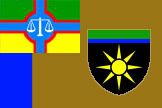
The provincial flag of Translaurent. The blue on the hoist represents the river Laurent, while the brown is the land of Translaurent It shows a separation from the past and their provincial independence. The sun is the provincial symbol, as it is the easternmost province, and thus the first to see dawn each day.
</div>
<div" class="plainlinksneverexpand">

The provincial flag of Roberçal. The stark colours are indicative of Eeyo'Uch beliefs in dichotomies, while the purifying wave brings a part of the opposite into each half.
</div>
<div" class="plainlinksneverexpand">
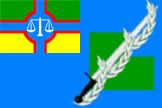
The provincial flag of the Îles jontadains. The sword wrapped with laurels illustrates the former military nature of the island, while the laurels show the peaceful nature of the new province. The green behind the sword stands in for the islands themselves.
</div>











